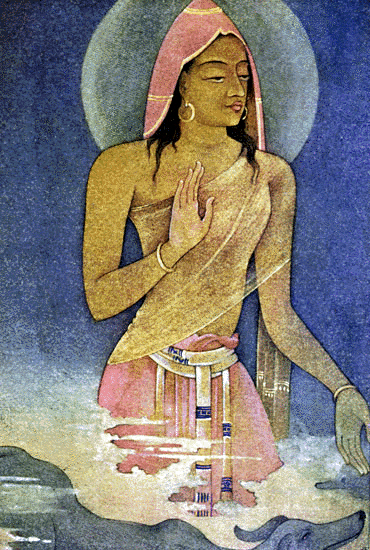Mahabharata: PDE Reading Notes C
 |
| Yudhishthira and His Dog, Ascending on Wikimedia |
This is a continuation of my Mahabharata notes. I found it extremely easy to get lost in the reading. This is for several reasons, and I am sure that other students, or other people experiencing the Mahabharata for the first time, probably find it a little overwhelming, too. The names are strange, people have multiple spouses, characters go on their own adventures for years, etc. As I had with the Ramayana, I went to YouTube to find a summary video to help me make sense of things. The first video that I came across was “Summary of Mahabharata” which you can access here: link. From this video, I took note of important morals to be learned from the epic. It is still necessary to read the original text, but I thought that it would be a good idea to try and take notes in a different form. In this set of notes, I have talked about key themes or morals in the story and given examples that I thought were important to mention. This may be how I write my Part D notes, as well.
The sections entitled Forest Life and Krishna’s Visit were ones in which I found more than one moral. These morals were Connect to the higher consciousness daily, See divinity all around, and Choosing the right over the pleasant is a sign of power. Draupadi and Yudhishthira are debating whether or not to keep faith and what the purpose of their hardships was according to the gods. Yudhishthira does not think that it is right to question such powers, but Draupadi speaks almost blasphemously. Yudhishthira prays to the sun god, “the eye of the universe, the soul of all things that are”, and has a positive outlook on their circumstances. For this, he is presented with a copper pot of food from Surya that will never empty. Draupadi continues to lament her situation, and Krishna comes to comfort her. Bhima and Draupadi attack Yudhishthira’s docile behavior, but he is the one representing true power. His faith is never shaken, and with his wise words he pushes the others into contemplation. I believe that all of the morals mentioned above are applicable to Yudhishthira here.
A section that I thoroughly enjoyed was Bhima and Hanuman. I was surprised that Hanuman made an appearance in this epic, as he was an essential character in the Ramayana. It was interesting to learn that Bhima and Hanuman are half-brothers from Vayu, the wind god. This section was a little confusing to read, as Hanuman is describing the four castes of Hinduism. Clicking on the Krita Yuga link, I learned a little bit about Hinduism myself. The Krita Yuga is the first of four eras “when humanity is governed by gods, and every manifestation or work is close to the purest ideal and humanity will allow intrinsic goodness to rule supreme” (Wikipedia link). This leads me back to the YouTube summary video in which one of the morals was Being good is a reward in itself. Hanuman goes on the talk about the other Yugas, and I thought that incorporating these details was an interesting way to learn about the Hindu religion.
I may write on Hanuman for one of my Mahabharata Storytelling assignments.
I may write on Hanuman for one of my Mahabharata Storytelling assignments.
Comments
Post a Comment